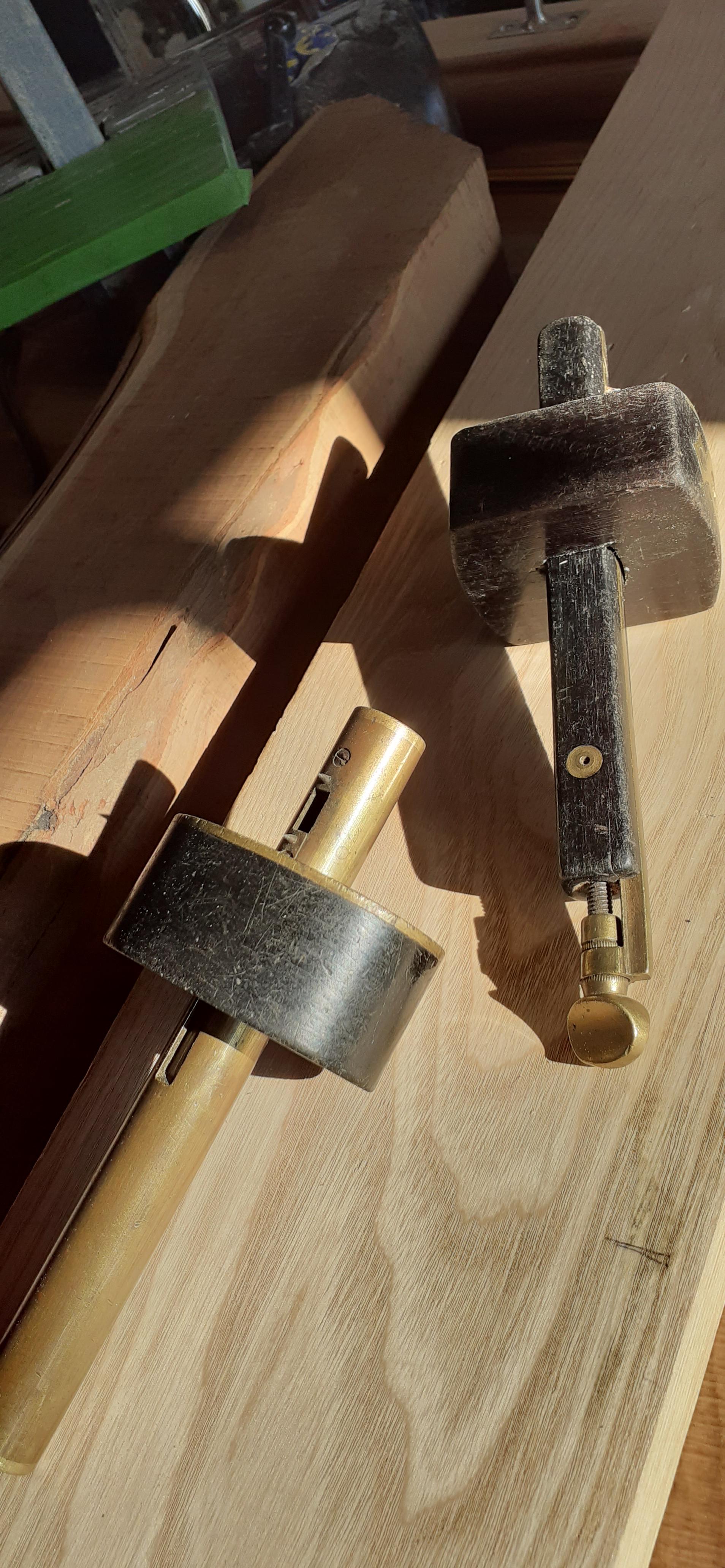This mortise gauge turned up at a local auction this weekend. Does anyone know who produced it ??
It has an unusual gear rack adjusting system that I haven't seen before; one side of the head has a screw which turns an internal cog which travels along the toothed track in the stem to adjust the head position (a locking screw is on the other side of the head, the mortise pin slide is on the other side of the stem). Stem length is 6-1/2".



I cleaned it a bit, so it looks pretty but it doesn't function very well (like some people I know)
[I'm contemplating taking it apart to loosen the seized mortise pin track and add the missing mortise pin, and to check the adjusting gear which seems to have a tooth missing or something. However the screws in the brass look to be custom filed to the surface profile after assembly, so it might be difficult to get back together neatly, and my history of disassembly disasters might be a warning.]
It has an unusual gear rack adjusting system that I haven't seen before; one side of the head has a screw which turns an internal cog which travels along the toothed track in the stem to adjust the head position (a locking screw is on the other side of the head, the mortise pin slide is on the other side of the stem). Stem length is 6-1/2".



I cleaned it a bit, so it looks pretty but it doesn't function very well (like some people I know)
[I'm contemplating taking it apart to loosen the seized mortise pin track and add the missing mortise pin, and to check the adjusting gear which seems to have a tooth missing or something. However the screws in the brass look to be custom filed to the surface profile after assembly, so it might be difficult to get back together neatly, and my history of disassembly disasters might be a warning.]












































